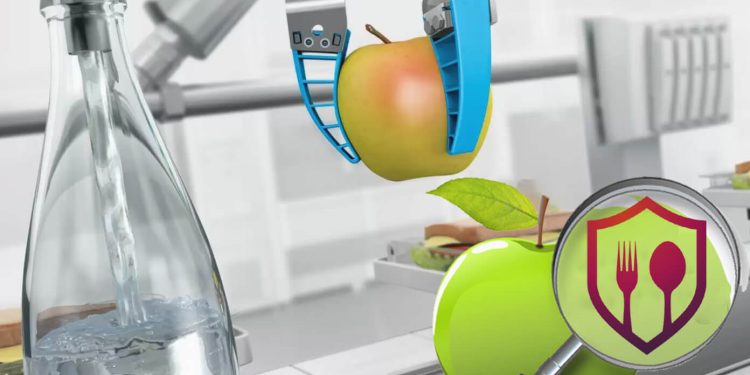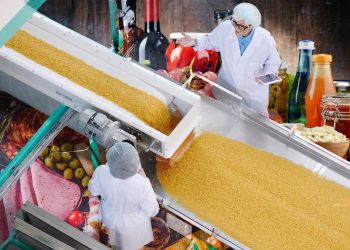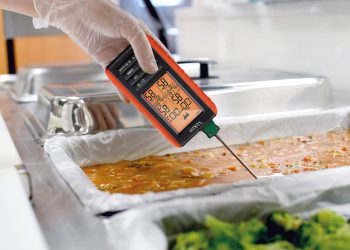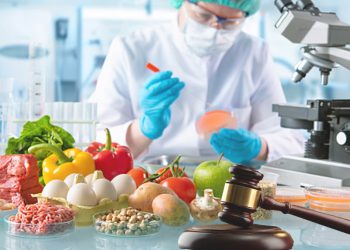Safety and quality concerns have constantly been hounding the food and beverage manufacturers. With recalls and regulatory changes becoming more common, it’s natural for the F&B businesses to be concerned about safety and quality issues. Without modern tools and technologies, it might have been a difficult battle to fight, but with new automation strategies leveraging AI, robots, IoT, and other technologies, companies have better chances of meeting quality and safety standards.
This article discusses how AI automation can help F&B companies to stay ahead of the curve and ensure food safety and quality.
Prevention of Quality Issues Before They Even Occur
IoT sensors, robots, and other data collection technologies can provide data for predictive analytic tools that can analyze data patterns to predict potential quality and safety issues.
By studying patterns in existing and historical data, AI algorithms can accurately predict which processes can introduce safety risks or limit product quality, allowing manufacturers to take action before the issues even occur. Industry researchers have already successfully used this technology to improve the efficiency of health and safety inspections and track foodborne illnesses.
Some other potential use cases of this technology for the F&B industry would be:
- Improving shelf life of products
- Evaluating food quality
- Detecting and preventing contamination
Each of these use-cases would improve the quality and safety of products while ensuring regulatory compliance.
Reduction in the Potential for Injury
By using automation, F&B manufacturers can minimize their workers’ exposure to different risks, including chemical hazards, heavy equipment injuries, injuries from sharp blades, and repetitive stress injuries.
Companies that fall in the category of 3 “Ds” – dull, dirty, or dangerous, can benefit significantly from automation.
For example, workers in meat processing units face risks of infections and injuries from sharp tools and machinery. The cold environment needed for preserving the meat also poses additional dangers.
Automation can help reduce the need for human workers in such dangerous working conditions. They can even manage hazardous tasks entirely independently, without human assistance.
For instance, When Covid-19 became a huge issue, it became difficult for humans to work in cramped, loud, and icy meat processing facilities. Tyson, US’s biggest meat company, turned to robotic butchers to debone and filet meat.
The pandemic spurred several other Food and processing units to leverage modern robotics and machine learning capabilities to automate tasks that pose significant safety hazards to human workers. Automation protects workers from the dangers of sharp tools and health risks associated with dangerous working conditions. It also frees up their schedule for more critical jobs elsewhere in the facility.
IoT devices, intelligent temperature monitors, paired with cloud-based data dashboards provide additional safety controls for better facilities management.
Managers have access to better information to make facilities safer and healthier for workers.
Automated Standard Operating Procedures (SOPs) for workers
SOPs or Standard Operating Procedures are issued to ensure employees comply with site safety and quality procedures and follow recipes. But compliances with SOPs often rely on human intentions and memory. Not following SOPs correctly can cause different issues, including:
- Performing a required step incorrectly.
- Failing to perform a required step
- Inadvertently wasting time or introducing errors.
- Performing steps in the wrong order.
These issues cause safety concerns, erode profits, and damage the brand’s reputation. With the help of modern technologies, businesses can automate their SOPs, which means interactive digital solutions are used instead of physical documentation to make compliance much more effortless.
Using automated SOP solutions, workers are walked through standardized working processes and alerted when they perform a step incorrectly, fail to complete a step, perform unnecessary work or do things in the incorrect order.
SOP automation can be a critical tool for businesses to ensure employee compliance.
IoT to improve business traceability and controls
Traceability initiatives are critical for F&B businesses for two reasons:
- For complying with retailer programs
- For offering additional information on their products to consumers
However, tracing a product’s journey can be difficult — especially for companies with complex supply chains. With the help of automation, traceability can be streamlined, making it easier for companies to track products. IoT tracking devices, paired with AI algorithms, can help F&B enterprises effectively establish the provenance of products they supply or use in manufacturing.
Moment-to-moment information can be tracked, and information can be obtained on where a product was at a given time. With this information in hand, businesses can more accurately develop a timeline of their products’ movement through the supply chain. They can quickly identify each item’s ingredients and effectively control material flow in their facilities.
Final words
Has AI been successful in making workplaces safer and more compliant? We may get different responses to this question. Still, considering the recent developments in the industry regarding safety and quality improvements, a majority of people would be convinced and aligned to say “yes” as an answer.








